3






November 22, 2013 www.plaintalk.net
Plain Talk: Heritage Edition
Event schedule – and visitor
traffic – remains busy at NMM
Expansion of NMM
is a work in progress
By Travis Gulbrandson
travis.gulbrandson@plaintalk.net
By Travis Gulbrandson
travis.gulbrandson@plaintalk.net
Throughout each year
the National Music
Museum (NMM) hosts a
variety of events that
allow the public to come
learn about new
acquisitions, see
performances by various
musicians, and just have
fun, too.
A good example of this
took place this past May,
when the NMM
commemorated the
acquisition of a guitar
played – and broken – by
Elvis Presley.
For the event, a 1978
Harley Davidson Electra
Glide 1200 CC
motorcycle formerly
owned by The King also
was on display, courtesy
of the Pioneer Auto Show
in Murdo.
“It (was) simply a
chance to celebrate the
new acquisitions and let
the public know they’re
here, and have a little fun
doing it,” said Cleveland
Johnson, Ph.D., director
of the NMM. “We took
the Elvis theme and ran
with it.”
Although the
motorcycle was only at
the museum for a day, the
guitar – a 1975 C.F.
Martin that Presley used
in 29 concerts during the
last year of his life – is
now a permanent resident
of the NMM.
Albeit a broken one.
“This instrument …
was damaged in a freak
accident onstage,”
Johnson said in an
interview earlier this year.
“(Presley’s guitar strap
broke, it slipped from his
hands, a string broke, he
was frustrated and he
threw it up in the air.”
The guitar now has
two holes toward the
bottom that resulted from
its fall to the stage.
“He couldn’t use it for
the rest of the concert so
he gave it away to a young
lady at the front of the
audience,” Johnson said.
“It passed through any
number of hands on the
way to landing here,
where it will stay.”
The Presley event took
place the weekend of
USD graduation this
spring, and also served as
a chance to help
introduce the rest of the
NMM’s “celebrity
collection,” which
consists of instruments
owned and/or played by
Johnny Cash, Muddy
Waters, John Entwistle,
Chet Atkins and Bob
Dylan.
Along with its
instrument unveilings,
the NMM also has regular
performances by a variety
of musicians.
Many of these come in
the form of “Brown Bag
Lunches,” which are held
most Fridays during the
school year and run from
12:05-12:55 p.m. in the
Arne B. Larson Concert
Hall.
However, the NMM
does hold non-brown bag
performances, too.
One of these took
place in June of this year,
when the museum was
visited by artist and
instrument builder Hal
Rammel, who constructs
his pieces out of materials
not usually associated
with music-making.
Rammel spoke during
the opening reception for
“The Shapes of Sound:
Hearing with Your Eyes,”
an exhibition of more
than 40 unusual
instruments.
One instrument
Rammel played was called
the “triolin,” a nail violin
he built in 1985 using an
old chair leg he found in
a Chicago alley and wood
from the bottom of a
discarded dresser drawer.
“When I made my first
nail violin, I didn’t want
to make a circular box,”
he said. “I thought a
triangle was much more
interesting. It was just a
much more dynamic
form.”
Nail violins create
sound when someone
draws a bow across the
nails, which have been
hammered into place on a
wooden box.
Based on his work with
the “triolin,” Rammel
decided to invent an
instrument using a
similar style but that
would make a louder
sound.
That is when he began
using amplified palettes,
which use both wood and
metal rods of different
diameters and lengths to
create varied sounds.
USD music major Wyatt Smith plays what may be the world’s
oldest playable harpsichord at the National Music Museum
during an event in September 2011.
(Photo by Travis Gulbrandson)
This 1976 Harley Davidson Electra Glide 1200 CC motorcycle
was on display courtesy of the Pioneer Auto Show of Murdo
at the National Music Museum to help unveil the new
“celebrity collection” in May.
(Photo by Travis Gulbrandson)
The artist’s palette was
a “natural form” in terms
of instrument-building,
Rammel said.
“It was perfect
ergonomically,” he said
“It’s been refined over
centuries, and I wanted a
handheld instrument. It’s
also a really dynamic
shape.”
The real treasures of
the NMM are its classical
instruments, some of
which are also playable, as
attendees learned in
September 2011 during
the unveiling of a
harpsichord made in
Naples, circa 1530.
The instrument may
be the oldest of its kind
that is still playable.
“Of the 16th-century
harpsichords that I’ve
seen, it’s in absolutely the
best condition,” said
NMM conservator John
Koster. “There was really
very little to do, most of
which was reversing some
alterations that were done
in the 17th century. The
soundboard is perfect.
“The main thing I had
to do was to make a new
set of jacks, the thing that
plucks the strings,” he
said. “The original ones
were missing, and the
ones that came with it
didn’t quite work. Other
than that, it was really
very minimal.”
Attendees got to hear
the instrument played by
USD music major Wyatt
Smith.
Back in May, Johnson
said events like these are a
great way to increase
museum traffic.
“Whether it’s a rare
violin, or whether it’s a
celebrity guitar, we are
thrilled however a new
visitor finds a way to us,”
he said.
Arne Larson comes to Vermillion
to serve as a professor of music in
1966, bringing hundreds of
instruments with him..
Through Time...
B3
With holdings of more
than 15,000 instruments,
space has long been an
issue for the National
Music Museum (NMM).
A project to join the
current museum facility
with the South Dakota
Union building next door
aims to be the solution to
this problem.
“The new complex will
mean the NMM, founded
40 years ago, has finally
come of age,” said NMM
director Cleveland
Johnson, Ph.D., in an email to the Plain Talk.
The NMM was
officially founded on July
1, 1973, and is housed in
the old Carnegie Library
building.
Renovating the South
Dakota Union and adding
a linking atrium would
enable the museum’s
collection to be housed
under one roof for the first
time.
“The SDU will be
completely renovated for
NMM use,” Johnson said.
“It will be the real
‘workhorse’ of the threebuilding complex. The
Union will provide storage
for the complete NMM
collection, it will house
offices for the NMM staff
and grad students (and) it
will contain the NMM
library, conservation lab,
photo studio (and)
workshops.”
The new atrium will be
constructed in a
contemporary style with
an angular glass façade
similar to other new
buildings on campus.
“Joining the two
existing buildings of
architecturally-disparate
styles, the atrium will
make its own statement,
providing bright,
welcoming space for
NMM visitors,” Johnson
said. “Appropriately, the
atrium will serve as the
new entrance for the
museum … and will be
the central gathering point
for individual visitors, as
well as our many tour
groups.”
“Besides the urgent and
fundamental work of
holding and displaying the
museum’s massive
collection, the expansion
would be a bold visual
announcement that we are
a world-class venue – a
unique public experience,”
added the NMM’s
manager of
communications, Patricia
Bornhofen, in an e-mail to
the Plain Talk.
Unlike the two older
buildings, the entrance to
the atrium – which will
become the museum’s
main entrance – will
provide improved access
for handicapped
individuals.
It also will serve as
another gallery, and
include an expanded
museum store and coffee
shop, as well, Johnson said.
The concept designed
has not yet been formally
unveiled for the public.
“Our budget for
concept design allowed for
only a couple of artistic
renderings, so it’s difficult
to imagine what the final
impression will be,”
Johnson said. “Regular
visitors to the NMM,
however, quickly
acknowledge the need for
expansion, since only a
small percentage of the
collection – perhaps 8
percent – can be on exhibit
at any one time in our
current space.”
The budget for the
actual construction
currently stands at $15
million, although Johnson
said inflation may increase
that number if the project
draws out beyond five
years.
The expansion project
itself has been under
discussion for more than a
decade, although it didn’t
always include the South
Dakota Union.
On his retirement in
2011, former NMM
director André Larson
said, “I had never thought
of the possibility of going
west because the student
center was there.”
However, if the
building went east, it
would eat into the
museum’s parking lot.
That’s why a link
seemed like the right idea,
Larson said.
Johnson agreed, saying,
“What started out as a
single room in the old
library, and which
gradually adopted and
adapted additional spaces
as it grew over the decades,
the new NMM complex
will finally give the
museum’s jaw-dropping
collection the space it
deserves.”
On April 6, 1979, Arne Larson
and his wife Jeanne donate
the instrument collection to
the State of South Dakota.
The National Music Museum is founded on the USD
campus on July 1, 1973, in the Carnegie Library building.
PUMPKIN PIE
BLIZZARD
Pumpkin pie pieces
blended in creamy vanilla
soft serve crowned with
whipped topping and
nutmeg
Saluting
Clay County’s
Musical Heritage
Craig K. Thompson
Law Office
109 Kidder Street
•
Vermillion
(605) 62 4 –2097
Try one today at your
local Vermillion
Dairy Queen!
Also available as an
ice cream cake!
905 E. CHERRY
VERMILLION, SD
605.624.4191
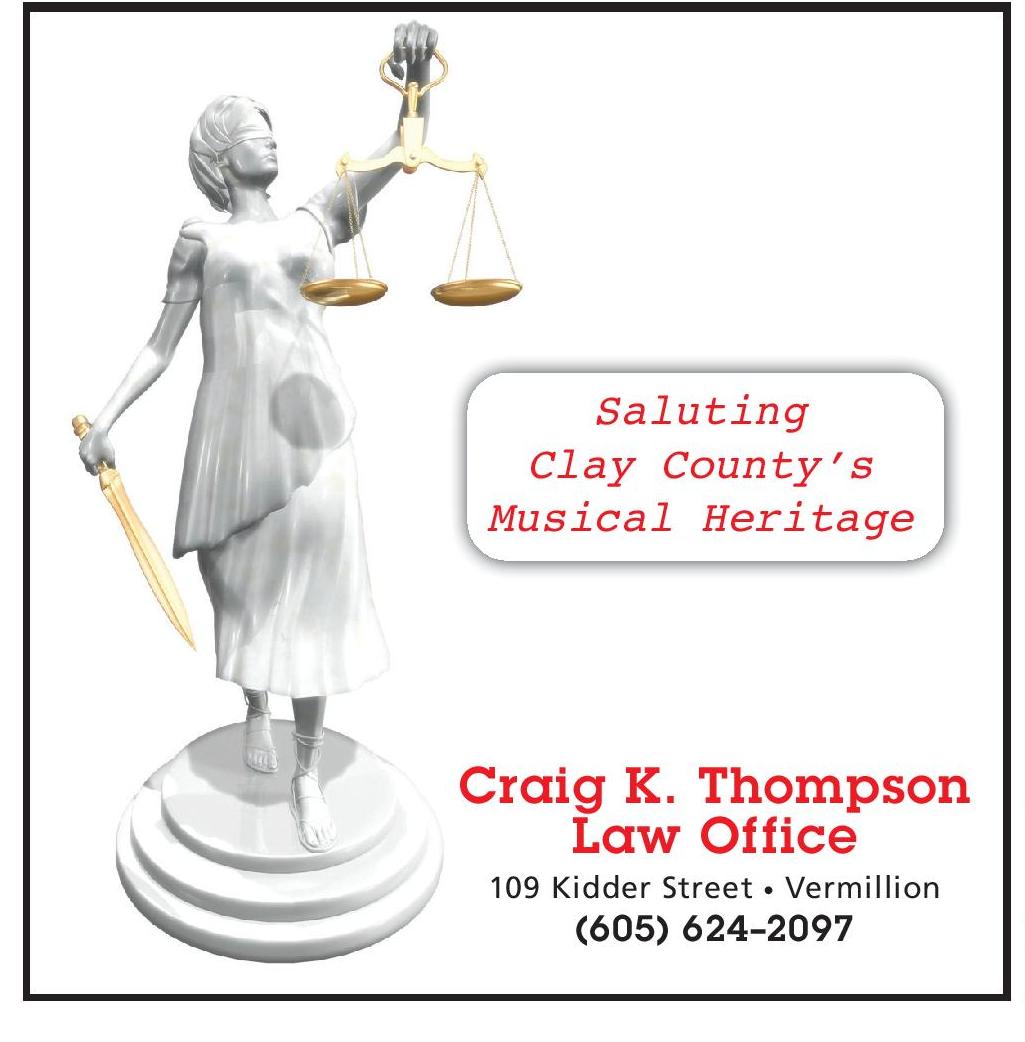






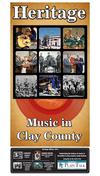
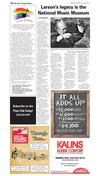




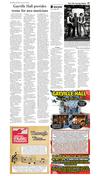


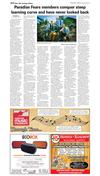
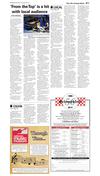

 Previous Page
Previous Page






